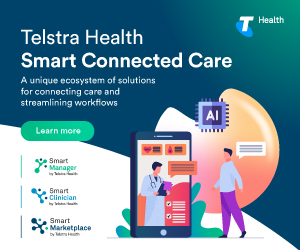Your questions about My Health Record’s opt out rule answered
In this article, we take a look at how the new opt out rule coming into effect in the Federal Government’s new My Health Record initiative will impact doctors and their patients.
What is the new opt-out rule?
The My Health Record (MyHR) initiative is a computer-based system designed to collate all of a person’s desired health records into one place, with the aim of making it easier to share this information with their various healthcare providers.
The Federal Government recently released its framework for secondary use of information contained within the My Health Record, only months prior the participation rules for the Australian national health record change from opt-in to opt-out.
According to the framework, consent for ‘secondary use of information’ is implied if people don’t opt out of the MyHR. In other words, members of the general public should take action if they don’t want their health data to be used for purposes other than direct clinical care.
What is the secondary use of data?
According to the framework, one of the main purposes of secondary use is the monitoring of outcomes of care, and the data can be leveraged by commercial organisations provided it is in the public interest and is consistent with research and public health purposes.
Examples of secondary use include, amongst others, evaluation of health interventions and health programs, construction of clinical registries, improvement of existing health services and increased visibility and insights into population health matters. It also includes development of government health policy, to develop/enable technology innovations and recruitment to clinical trials.
Who will control the data?
The Australian Institute of Health and Welfare (AIHW) is set to act as the data custodian, while a new “My Health Record secondary use of data governance board” will assess applications for access to MyHR data based on the use of data.
The board can permit the linkage of myHR data with other data sources once the applicant’s use is assessed to be of public benefit. In an example provided in the framework, researchers link MyHR information to a database of clinical trial participants to investigate hospitalisations, morbidity and mortality.
What is not permitted?
There are a number of uses of MyHR data that are not permitted including the determination of funds allocation for a health service, remuneration of individual clinicians, individual clinician audits and direct marketing to consumers. MyHR data can also not be used for the asessment of insurance premiums and/or claims, the assessment of eligibility for public benefits or criminal and/or national security investigations (except as required by law).
Any data that is removed or classified by consumers as “restricted access” will also not be retrieved for secondary use purposes. To stop information flowing to third parties, individuals will have to press the “withdraw participation button”.
How can individuals opt out?
According to the Australian Digital Health Agency, which is administering the scheme, said individuals can cancel their My Health Record at any time, or create one if they previously opted out. If you decide that you don’t want a My Health Record created on your behalf, you will have the opportunity to alert the MyHR body during a three-month period.
This period will run from 16 July to 15 October 2018. It’s not possible to opt out of having a My Health Record before this period starts on 16 July 2018.
There are also a number of privacy control settings that both healthcare providers and individuals need to be aware of to ensure access controls are set up correctly.
How will this impact healthcare providers’ relationship with patients?
With expectations of the first release of secondary use data to occur in 2020 at the earliest, it remains to be seen how it will impact the relationship between patients and healthcare providers.
However in order to ensure transparency, it is imperative healthcare providers offer as much information and resources as possible to their patients should they request it.









